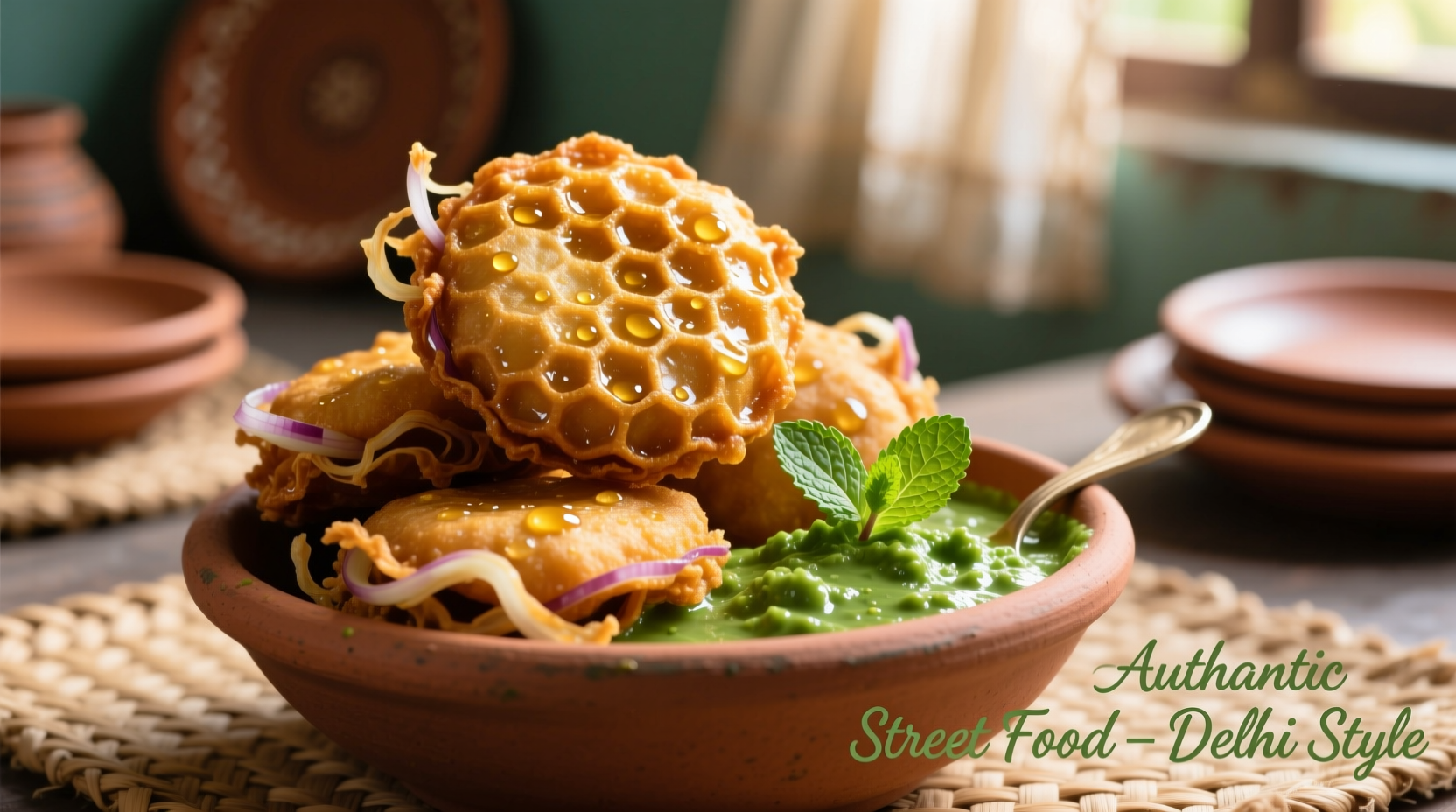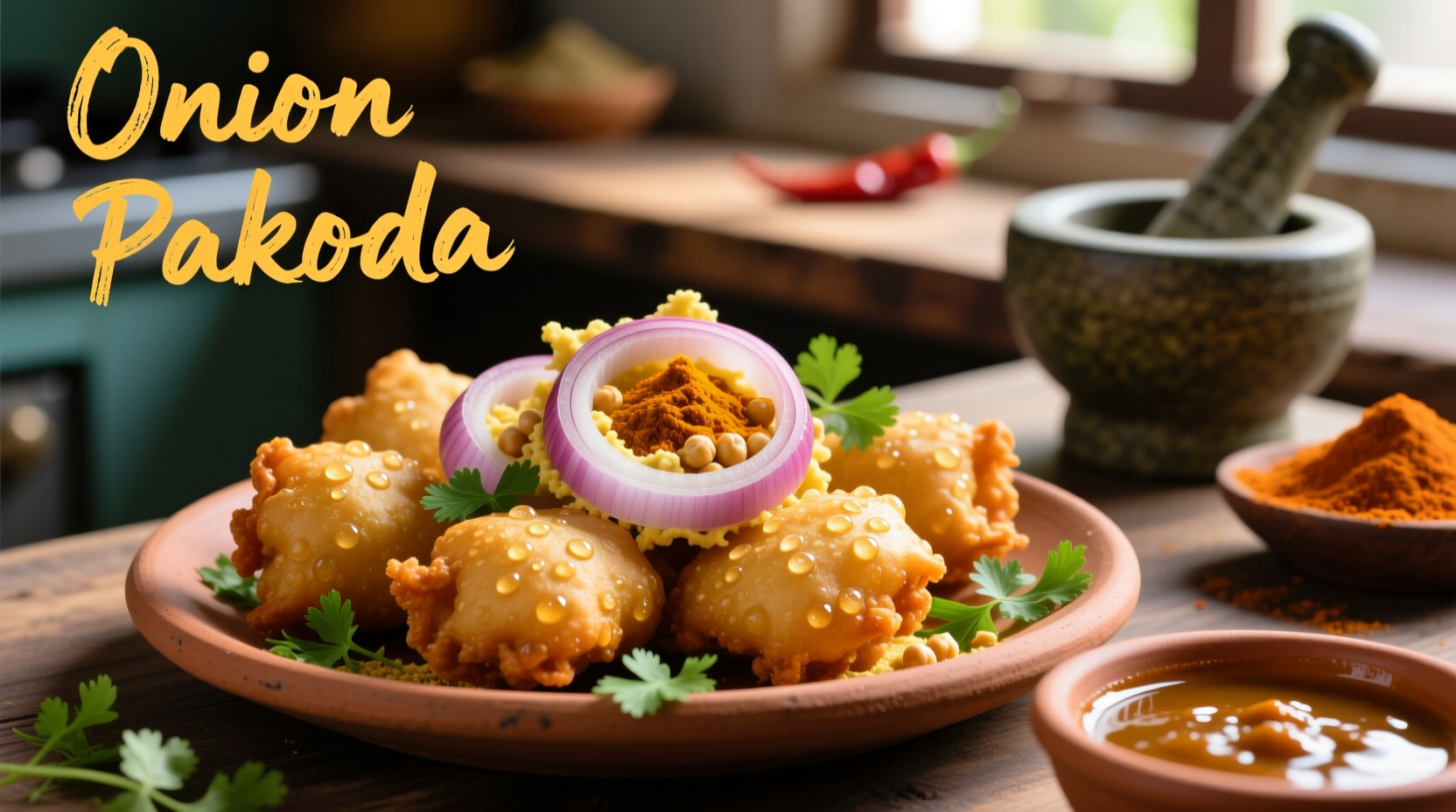Perfect onion pakoda requires just 6 ingredients, 15 minutes preparation, and oil heated to precisely 350°F (175°C) for crispy results every time. This authentic recipe delivers golden-brown fritters with a light, airy interior and avoids common pitfalls like soggy batter or oil absorption.
The Science Behind Crispy Onion Pakoda
Onion pakoda (also called onion bhaji) represents one of India's most beloved street food snacks, enjoyed for centuries across the subcontinent. What separates mediocre pakodas from exceptional ones comes down to precise technique and understanding how ingredients interact. The magic happens when chickpea flour (besan) forms a protective barrier around onions, preventing moisture release while creating that signature crunch.
Professional chefs know that successful pakodas depend on three critical factors: batter consistency, oil temperature control, and onion moisture management. Get these right, and you'll achieve restaurant-quality results at home.
Essential Ingredients and Their Roles
Traditional onion pakoda requires minimal ingredients, but each plays a crucial role in texture and flavor development:
| Ingredient | Function | Substitution Options |
|---|---|---|
| Chickpea flour (besan) | Creates crisp texture, prevents oil absorption | Rice flour (for gluten-free), all-purpose flour (less authentic) |
| Red onions | Optimal moisture content, sweet flavor when fried | Yellow onions (more pungent), shallots (delicate flavor) |
| Fennel seeds | Traditional flavor enhancer, aids digestion | Cumin seeds (earthy flavor), carom seeds (ajwain) |
| Baking soda | Creates air pockets for light texture | None (results in denser pakodas) |
Step-by-Step Preparation Guide
Preparation Phase: Managing Onion Moisture
Excess moisture is the enemy of crispy pakodas. After slicing onions:
- Sprinkle 1 teaspoon salt and let sit for 10 minutes
- Squeeze gently in a clean kitchen towel to remove excess liquid
- Pat completely dry with paper towels
Batter Mixing Technique
The batter consistency makes or breaks your pakodas. Follow these steps precisely:
- Mix 1 cup chickpea flour, 1½ teaspoons rice flour, ¼ teaspoon baking soda, and spices in a bowl
- Add 3-4 tablespoons ice-cold water gradually while whisking
- Stop when batter reaches thick pancake consistency - it should coat the back of a spoon but slowly drip off
- Fold in dried onions and 1 tablespoon oil (creates crispier texture)
Frying Process: Temperature Control is Key
Use a deep, heavy-bottomed pot with at least 2 inches of oil. The oil temperature must be precisely monitored:
- Heat oil to 350°F (175°C) - use a thermometer for accuracy
- Test with a small batter drop - it should sizzle and rise immediately
- Fry 4-5 pakodas at a time to maintain temperature
- Cook for 2-3 minutes until golden brown
- Drain on wire rack (not paper towels) to maintain crispness

Troubleshooting Common Problems
Soggy Pakodas
Cause: Oil temperature too low or excess moisture in onions
Solution: Maintain 350°F oil temperature and thoroughly dry onions before battering. As noted by the Indian Council of Agricultural Research, "moisture content in fried foods directly correlates with oil absorption" (ICAR, 2023).
Batter Not Sticking to Onions
Cause: Batter too thin or onions too wet
Solution: Adjust batter consistency to thick pancake texture and ensure onions are completely dry before coating.
Excess Oil Absorption
Cause: Oil temperature fluctuation during frying
Solution: Fry in small batches and allow oil to return to 350°F between batches. The Food Safety and Standards Authority of India recommends maintaining consistent oil temperatures to reduce acrylamide formation (FSSAI, 2022).
Regional Variations Across India
Onion pakoda has evolved differently across India's diverse culinary landscape:
| Region | Distinctive Features | Special Ingredients |
|---|---|---|
| North India | Thicker batter, larger pakodas | Garam masala, fresh cilantro |
| South India | Thinner batter, smaller pakodas | Curry leaves, mustard seeds |
| West India | Moderate thickness, balanced spices | Fenugreek leaves, fennel seeds |
| East India | Lighter batter, subtle spices | Panch phoron, poppy seeds |
Serving and Storage Tips
For best results, serve pakodas immediately while hot and crispy. Traditional accompaniments include:
- Mint-coriander chutney (most common pairing)
- Tamarind-date chutney for sweet contrast
- Hot masala chai (spiced tea)
If you must store leftovers, place in an airtight container with paper towels to absorb moisture. Reheat in an air fryer at 325°F for 3-4 minutes to restore crispness - never use a microwave.
Frequently Asked Questions
Can I make onion pakoda without chickpea flour?
Yes, but results will differ. Rice flour creates a lighter, crispier texture but lacks the nutty flavor of besan. All-purpose flour works in a pinch but absorbs more oil. For authentic taste and texture, chickpea flour remains essential to traditional onion pakoda preparation.
Why do my pakodas turn out soggy even when oil is hot?
Soggy pakodas typically indicate excess moisture in the onions or batter that's too thin. Ensure you salt and thoroughly dry onions before battering, and maintain proper batter consistency - thick enough to coat the back of a spoon but still drip slowly. Overcrowding the pan also drops oil temperature, causing oil absorption.
How can I make healthier onion pakoda with less oil?
For lower oil absorption, add 1 tablespoon oil to the batter before frying, maintain precise 350°F oil temperature, and drain pakodas on a wire rack instead of paper towels. The Food Safety and Standards Authority of India confirms that proper temperature control reduces oil absorption by up to 30% compared to inconsistent frying temperatures.
What's the best way to reheat leftover pakodas?
Reheat pakodas in an air fryer at 325°F for 3-4 minutes to restore crispness without additional oil. Avoid microwaves, which make pakodas soggy. For best results, pakodas should be consumed immediately after frying, as they lose crispness within 30 minutes at room temperature.











 浙公网安备
33010002000092号
浙公网安备
33010002000092号 浙B2-20120091-4
浙B2-20120091-4